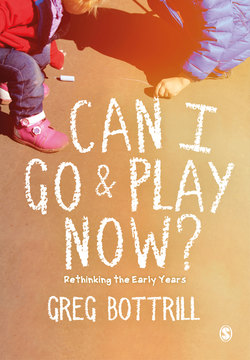Читать книгу Can I Go and Play Now? - Greg Bottrill - Страница 7
На сайте Литреса книга снята с продажи.
Introduction
ОглавлениеEducation is entwined with society; it runs like a thread through it. In the adult world we think that the children we shape today become the adults of tomorrow, so we put great efforts and considerable public money into doing so. The adult world looks for outcomes for this investment. It looks to business leaders and corporations and in doing so devises a system of grading and measurement that can serve these sectors. In turn, we then put great pressure on our schools and teachers to create these children of tomorrow. League tables, phonics screening tests, SATs, GCSEs, a chain of hoops to jump through and of inadvertent pressure on our young people today. We seem obsessed with grading, passing and failing, being good enough or not good enough.
In doing so we are rushing headlong into forming a society that is low on self-esteem, high on ill-health and ‘spiritually’ impoverished. We have a teaching sector in which recruitment is becoming increasingly difficult, where morale is low and new teacher retention lasts on average around five years. It’s a bleak picture.
Perhaps if you are reading this as a trainee teacher, you might be thinking that all is lost and to pack up your things, and go and search for an alternative career. Yet teaching is a wonderful occupation. Like all jobs, it has its highs and lows, its challenges and pressures, but there is nothing better than seeing children in your care thrive and flourish. An adventure with young people is the best kind and in Early Years you have the opportunity to go on an adventure of a lifetime. My hope is that by the end of this book, you will know that the adventure is possible and that the key to unlocking it lies in your very own hands.
Our map for the journey ahead begins with looking at the child and how they are and need to be right at the centre of their learning. It then takes us to explore the importance of understanding children’s next steps and how the environment we create through our continuous provision needs to lie at the heart of our Early Years practice. There will be challenges along the way and nagging doubts that are an inevitable part of change, but all the time, as we are reading, we need to hold on to the basic acceptance that children need the space to be themselves for their own growth, and that this can only truly happen if we enable play – play that is from the child.
We’ll confront the adult world and its demands of the child and how it attempts to stifle children’s ‘language’, and the need for us to be facilitators rather than teachers. Then it’s headlong into the 3Ms, the approach that has the ability to meet the adult world’s predilection for data, measurability and progress while at the same time creating the conditions for children to engage in joyful, collaborative play – this, I hope, is the exciting bit. What follows directly after this I’ll keep a secret for now, but I don’t think you’ll be disappointed. Then it will be time to explore the great outdoors and last, but not least, we’ll find time to consider the adults around us in the adult world and how we can utilise or shape them for the benefit of our children.
I guess there’s no better time than now to explain the book’s title. I’m sure you’ve heard it in the classroom from children, who after sitting at your table with you filling out some worksheet or other, or while you try to get children to do what you’ve asked them to do on your planning sheet with spongy letters in the water tray, will say in a pained tone: ‘Can I go and play now?’
Just hearing those six words should be enough to tell you that your practice possibly needs to change. It’s a product of boredom, disengagement, of unplayful Not-Play. Once you get to the end of this book and if you feel inspired to try the approach outlined in its pages, I’m convinced that you’ll never hear those six words again.
Happy reading and happy playing, Greg :)
